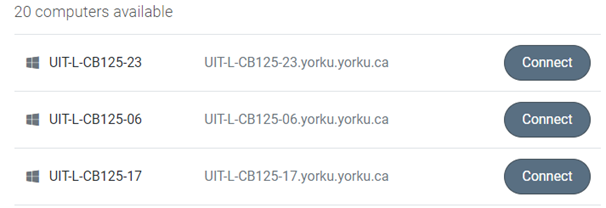

- #Vpn for mac to access lab server how to#
- #Vpn for mac to access lab server install#
- #Vpn for mac to access lab server drivers#
The reason for this is that the MAC address is actually "burnt-in" into your network card's memory chipset.
#Vpn for mac to access lab server drivers#
Logical addresses require you to load special drivers and protocols in order to be able to configure your network card/computer with an IP Address, whereas a MAC address doesn't require any drivers whatsoever. MAC addresses are physical addresses, unlike IP addresses which are logical addresses. We are going to analyse them in depth here so we can get a firm understanding of them since they are part of the fundamentals of networking. Press enter or return on your keyboard.ġ0) Click the top-left Apple icon, then click Restart… or double-click the “Restart Computer” icon on the desktop when you are finished.Media Access Control (MAC) addresses are talked about in various sections on the site, such as the OSI-Layer 2, Multicast, Broadcast and Unicast. Click “OK.”ĩ) Windows users: You will see a login screen, with no option but to login as the user iguest. Press enter or return on your keyboard.ħ) Windows users: You will be presented with an “Insecure Connection” notice. It is okay to click “Continue.”Ĩ) Windows users: At the “Authentication…” screen, for “Username:” enter iguest. Press enter or return on your keyboard to log in.Ħ) Windows users: Start the VNC Viewer application. Paste/enter the IP address from step 5, into the “Enter a VNC Server address or search” field. You will see a login screen, with no option but to login as the user iguest. Click “Connect.” Open “Screen Sharing.app” when prompted. MacOS users: Click “Connect” next to any available computers. In the “Connect” window that opens, copy the “IP address” the number like “172.X.X.X”. Windows users: Click “Connect” next to any available computers. Delete everything in the “Select server:” field.Ĥ) Using a web browser, go to the address:ĥ) Click any room name beginning with “macOS” to see available macOS computers. Enter your UW NetID credentials when prompted.ī. Click the BIG-IP Edge Client icon in the top-right menu bar, click iSchool VPN.į. Click the BIG-IP Edge Client icon in the top-right menu bar, click Manage VPN Servers…Į.
#Vpn for mac to access lab server how to#
Information about Husky OnNet and how to download the Husky OnNet application can be found on UW-IT’s site:ģ) Add the iSchool specific server address:Īnd connect using the Husky OnNet application:Ī. If the computer you are trying to connect from is running macOS: There are no extra applications to install.Ģ) Start the Husky OnNet virtual private network (VPN) application.
#Vpn for mac to access lab server install#
Computers may be restarted by iSchool IT when necessary.ġ) If the computer you are trying to connect from is running Windows: You need to download and install the zero-cost application named “VNC Viewer”:

Restart the computer (click top-left Apple icon -> Restart) when you are finished. Save any specific files you need to a cloud-storage location. All changes, files, typed-in-information, passwords, etc., will be erased when the computer restarts.

Computers are set to auto log out and restart after 10 minutes of inactivity. The computers accessible via these instructions are shared resources. The iSchool’s macOS computer lab computers can be accessed remotely, from a personal Windows or macOS computer, by following the instructions below.Ī general list of software installed on the computers can be found on this web page:


 0 kommentar(er)
0 kommentar(er)
